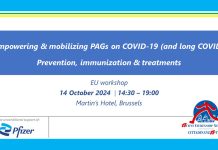
This article delves into the escalating challenge of healthcare-associated infections in 2024 and the innovative strategies being employed to combat this issue.
As we forge ahead into the year 2024, the landscape of healthcare continues to evolve, bringing with it a complex interplay of challenges and opportunities. Among these, healthcare-associated infections (HAIs) present a particularly pressing issue, demanding comprehensive understanding and effective mitigation strategies. The scope of HAIs, in terms of their prevalence, impact, and the complexities surrounding their management, is vast and continues to expand.
The stakes are high, with the well-being of millions at risk, and the potential economic implications being equally substantial. As we navigate through this multifaceted issue, we must critically examine the current strategies in place, the emerging technologies aiding in reducing HAIs, and the policy changes required to control these infections. While the road ahead is paved with challenges, it is also ripe with opportunities for significant strides in enhancing healthcare safety and quality.
Emerging pathogens: New threats in hospital settings
In the evolving landscape of healthcare, emerging pathogens pose new threats in hospital settings, necessitating a proactive approach to surveillance, prevention, and control. These pathogens, often unforeseen, can lead to healthcare-associated infections (HAIs), triggering outbreaks and escalating patient morbidity and mortality rates.
The role of advisory bodies like the HICPAC is crucial in this context. Comprising experts in various fields, this committee is dedicated to enhancing infection control practices and measures, with a specific focus on emerging pathogens. Through regular meetings and thorough research, the committee is constantly working towards reducing the prevalence of HAIs and improving overall healthcare quality.
Implementation of stringent infection control measures is essential to mitigate the spread of these pathogens. These measures, guided by standards set by global health authorities, have shown promising results, with a decrease in HAIs observed over recent years.
However, patient awareness and education remain key. Patients’ lack of knowledge about HAIs can impact their healthcare choices and their interactions with healthcare professionals, underscoring the need for increased public awareness about these infections. Through collective efforts and robust strategies, the threat of emerging pathogens in hospital settings can be effectively managed.

Advances in prevention of healthcare-associated infections in 2024
The year 2024 marked significant strides in the prevention strategies against healthcare-associated infections, propelled by advancements in patient education and bolstered by substantial investments from global health authorities. Understanding the scope of healthcare-associated infection involved a comprehensive approach, using prevalence surveys and reporting facilities to capture the true burden of these infections.
Advances in prevention strategies led to a gradual decrease in HAI rates. Notably, four primary areas of focus emerged:
- Reduction of device-associated infections, significantly lowering HAI risk.
- Enhancement of patient knowledge and awareness of HAIs, necessitated by patients’ desire to be informed about potential infection exposure.
- Improvement in patient education on HAI prevention, addressing the widespread lack of sufficient information among patients.
- Acknowledgement of the influence of HAI rates on hospital choice, with patients showing a preference for healthcare facilities with lower infection rates.
Moreover, the CDC’s substantial investment of $2.1 billion bolstered infection prevention and control activities, addressing challenges highlighted by the COVID-19 crisis. These developments in 2024 significantly shifted the landscape of HAI prevention, promising a safer healthcare environment for all.
The role of technology in reducing HAIs
Building on the advancements achieved in HAI prevention strategies, technology’s role has emerged as a game-changer, particularly in terms of early identification, trend analysis, and enhancing the overall quality of infection prevention measures. Sophisticated tools like Sentri7 Infection Prevention utilise advanced algorithms to monitor patient populations, enhancing the speed and accuracy of identifying and curbing the spread of healthcare-associated infections (HAIs).
Moreover, the role of technology extends beyond early detection and monitoring. It is instrumental in transforming healthcare informatics, with Large Language Models and Artificial Intelligence proving pivotal in fine-tuning infection control strategies. By streamlining regulatory reporting processes, technology assists in reducing costs associated with HAIs.
Another crucial aspect is the contribution of technology in building resilience in Infection Prevention & Control (IPC) programs, enabling them to respond effectively to future pandemics. Thus, the role of technology in reducing HAIs is multifaceted, offering solutions not only in early identification and prevention but also in enhancing the overall quality of healthcare services.
The growing challenge of antibiotic resistance in healthcare
Undeniably, the escalating challenge of antibiotic resistance in healthcare is compromising the efficacy of treatments for a myriad of infections. This resistance, largely a consequence of overuse and misuse of antibiotics, is a significant contributor to the burden of healthcare-associated infection. These hard-to-treat infections pose a growing threat to patient safety, demanding robust infection prevention and control strategies.
The Centers for Disease Control and Prevention, among other public health bodies, emphasise the need for a multi-pronged approach to tackle this issue:
- Enhanced surveillance of antibiotic-resistant strains of infectious diseases
- Implementation of comprehensive antibiotic stewardship programs
- Research and development of innovative antimicrobial agents
- Promotion of intersectoral collaboration among healthcare providers, researchers, and policymakers
The fight against antibiotic resistance is not just about preserving the effectiveness of current antibiotics. It’s also about ensuring future generations can benefit from these life-saving drugs. As we look towards 2024, the challenge of antibiotic resistance is a reminder of our collective responsibility to safeguard the integrity of our healthcare systems.

Comparing HAIs across different regions
Monitoring and comparing healthcare-associated infections (HAIs) across different regions necessitates the use of diverse surveillance methods and statistical analyses. The scope of HAIs in 2024 will highlight regional discrepancies due to varied healthcare practices, protocols, and resources.
Device-associated infections and pathogens often show variations in incidence rates across different regions. For instance, a region with high use of invasive techniques may have a higher rate of these infections. Similarly, regional healthcare policies and practices impact the prevalent risk factors and management strategies for HAIs.
Moreover, patient knowledge and awareness of HAIs, as well as their willingness to engage in prevention measures, can significantly impact HAI rates in a region. Lack of proper knowledge can lead to increased infection rates, while higher awareness and engagement can contribute to lower rates.
Understanding and comparing HAIs across different regions is a complex task, but it is crucial for developing effective prevention strategies and policies. As we move towards 2024, continuous monitoring and comparison of HAIs will be essential in evaluating the effectiveness of these strategies and making necessary adjustments.
Policy changes and initiatives to control healthcare-associated infections
In light of the major health implications of healthcare-associated infections (HAIs), numerous policy changes and initiatives have been implemented to control their spread and impact in healthcare settings. These initiatives, informed by the Healthcare Infection Control Practices Advisory Committee (HICPAC), are aimed at enhancing surveillance, prevention, and control of HAIs.
Key highlights of these policy changes and initiatives include:
- Development and revision of guidelines for infection control practices.
- Efforts to combat antimicrobial resistance and improve healthcare quality.
- Use of surveillance methods and statistical analysis to monitor HAI incidence.
- Emphasis on patient education and autonomy in healthcare decision-making.
These initiatives have led to the implementation of various infection control interventions. A decreasing trend in HAIs has been observed from 2012 to 2019, demonstrating the effectiveness of these policy changes. The role of HICPAC in shaping infection control practices and supporting HAI prevention efforts underscores the importance of such advisory bodies in influencing healthcare policy. It is essential that these efforts continue, and evolve in response to emerging challenges and advances in healthcare technology and practices.











